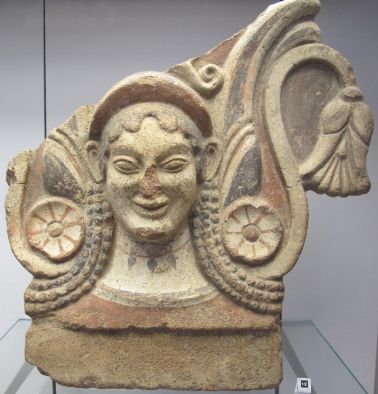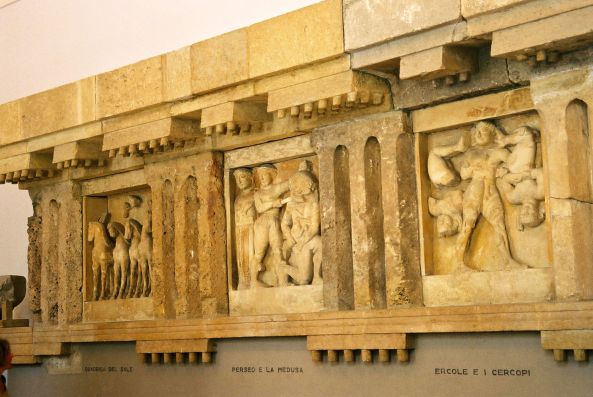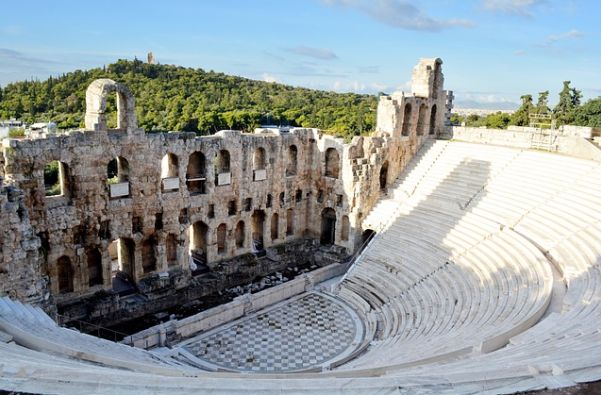Archaic Architecture – Definition, Styles and Concepts
Contents
What is Archaic Architecture?
The Archaic Architecture is the most primitive, with a very basic and simple style to protect from the weather and also to perform cults according to religious tendencies, to the gods, as well as rituals, megalithic structures, house or hut constructions.
Archaic Architecture is the one made of limestone and marble. The greatest representatives are the Greeks, who built their temples in their own style after learning about the stone temples of the Egyptians. The structure of the temples was a rectangular plan elevated on a stepped base, in an enclosure to carry out ritual ceremonies. The smaller temples also had a portico front with two columns or a row of columns in front of it. Larger temples with porticoes at both ends could have a vestibule of six (6) columns or be totally surrounded by a peristyle. The colonnade supported an entablature under a gabled roof.
How did the Archaic Architecture develop?
From this architecture the classical models are outlined, which in the development of Greek art are fixed in measures and proportions inspired by the sense of balance and harmony of Hellenic art. In a first moment they emerge and are perfected under the influence of the Greek art and architecture, of the Cretan, Mycenaean and Egyptian civilization. At that time the architecture evolves from the geometrism and abstraction of the oriental current, towards the expressive naturalism. Likewise, in the Pelasgic or primitive architecture dating from 3,000 to 700 B.C., the materials used were natural stone in large blocks, large adobe bricks and wood as a working element, forming lattices, which serve as jambs, which are vertical pieces that support the lintel as a primitive column. Clay is used as mortar, and lime to settle the large ashlars carved in a rough manner.

How is the Archaic Architecture classified?
The Archaic architecture, also called Pelasgic, presents several periods according to the evolution of the way of building: Doric, Ionic and Corinthian. According to these three periods, the Greeks developed different types or styles of columns, with capitals (the upper part of a column) also different and with changes in their elaboration, depending on the period. The following are the most outstanding characteristics of the columns in each period.
Doric
Doric columns were quite stout and the capital was flat. In ancient Greece and in the colonies of southern Italy and Sicily, this style was the most common.
Ionic
The columns were more stylized and elegant, this style was found in eastern Greece and some nearby islands. Its capital was adorned with volutes (spiral-shaped decorations).
Corinthian
This style was very common in Roman temples, and was characterized by using an ornate capital adorned with leaves in the shape of a plant whose name was the acanthus.
What is the legacy of Archaic Architecture?
The most important legacy of Archaic Architecture was the Greek temples and their structure is that of the building that represents the supreme expression of the art and genius of the Greeks, which, together with sculpture and painting, contribute to enhance the whole. Thus, the appearance of the temple marks the appearance of the polis, which is the origin of the Greek city. Therefore, the temple was the house of the statue of a god, however, in it the faithful never gathered but did so in the atriums or courtyards. For this reason its proportions were reduced in the beginning, but as time went by, these dimensions increased. In the same way, since its appearance in the archaic period, the constructions present a disposition in its parts that almost does not change and was conformed by the CELLA or NAOS, which was the rectangular room where the statue of the divinity dwells. The PRONAOS, which is a vestibule, composed of columns, which preceded and gave access to the cella and the OPISTODOMOS, defined as the dependency that served to keep the treasures of the temple.

Types of Archaic Architecture and most representative examples
In this architecture the most representative buildings are the temples, which were built to pay tribute to the gods, in them the public did not perform the rites, but large spaces were built on platforms or courtyards for people to gather in them.
Main types of temples
According to the position and the number of columns that adorn the facades, four main types of temples are distinguished:
With ANTAS
The lateral walls extend forward, enclosing the portico.
Prostile
Which contains only one portico.
Anti Prostilos
Those temples that have only one portico at each end.
Peripteral
They are defined as such when the colonnade runs along all four sides.
Monopteros
When the temple has a circular plan and is surrounded by a colonnade. This last type is very elegant, and rather rare.
Some emblematic temples
The Mausoleum of Halicarnassus
One of the seven wonders of the ancient world, it was built as the tomb of the wife of Mausolus, king of Caria, ancient region of Asia Minor on the Aegean Sea, who had it built in memory of himself. It is not known except for the descriptions left in contemporary writings and archaeological discoveries. However, both have only been able to give rise to reconstruction essays.
The Theater of Dionysos, Acropolis of Athens
Considered as another important manifestation of Greek architecture. It was built taking advantage of the lay of the land, so it has semicircular stands whose ends exceed the semi-circle, enclosing the full circle in the inner plane, where the choirs sang and danced, and also instrumental music competitions were held. The stage was presented in front of the audience, which was constituted by a long and narrow platform, to which a permanent architectural decoration served as background and behind it there were chambers destined to the costumes.

Temple of Hephaestus, Athens
It is one of the best preserved Doric temples in Greece, next to the Temple of Aphaia on the island of Aegina. The god Hephaestus was the Greek god lord of volcanoes and blacksmiths. In this temple you can see the friezes (with representations of Hercules) and the two statues representing Hephaestus and Athena, both of enormous proportions.
The Stoa or Portico of Attalus (the museum of Agora)
This building is located in the Agora of Athens. It is shown as an unusual two-story building, and was a gift to the city of Athens from King Attalus of Pergamum in 150 BC. This building was what is known today as a commercial center because of the numerous stores inside. Thus today, the building, which has been fully restored, is used as a museum of the Agora of Athens and contains in its interior pieces of great value found during the excavations in this place thanks to which we can have an idea of the times in which the Agora of Athens was a place for the daily life of the ancient Athenians.
The Byzantine Church of Agii Apostoli
It is also known as the Church of the Holy Apostles, and also the Church of the Solaki Apostles, is located in the ancient Agora of Athens, the capital of Greece. It dates back to the tenth century and is considered the best example of Byzantine architecture. Its conformation is that of a Greek cross, with all the arms of the same size, which in the center contains a dome visible even from the outside. This church illustrates the Athenian domes of Byzantine style and is its most representative part. Thus, on the façade of the west side one can observe the decorations with bricks containing kufic calligraphy, which were restored in the 20th century. Likewise, in the interior of the temple you can see some fresco paintings dating from the seventeenth and eighteenth centuries.
Which are the most important artists and/or representatives?
It is not possible to speak of individual representatives in archaic architecture, rather it is found that the Greeks as an organized society were the ones who promoted archaic architecture. Thus, what determines it are the buildings, whose most important emblems are the temples. Likewise, the materials used represent one of the outstanding characteristics of this architecture, as well as the design of the temples. Therefore, the Greek civilization with archaic architecture built its own identity evidenced in their great skills as artists and architects with a very particular worldview that has often been interpreted as a controversy between the Apollonian and the Dionysian.
